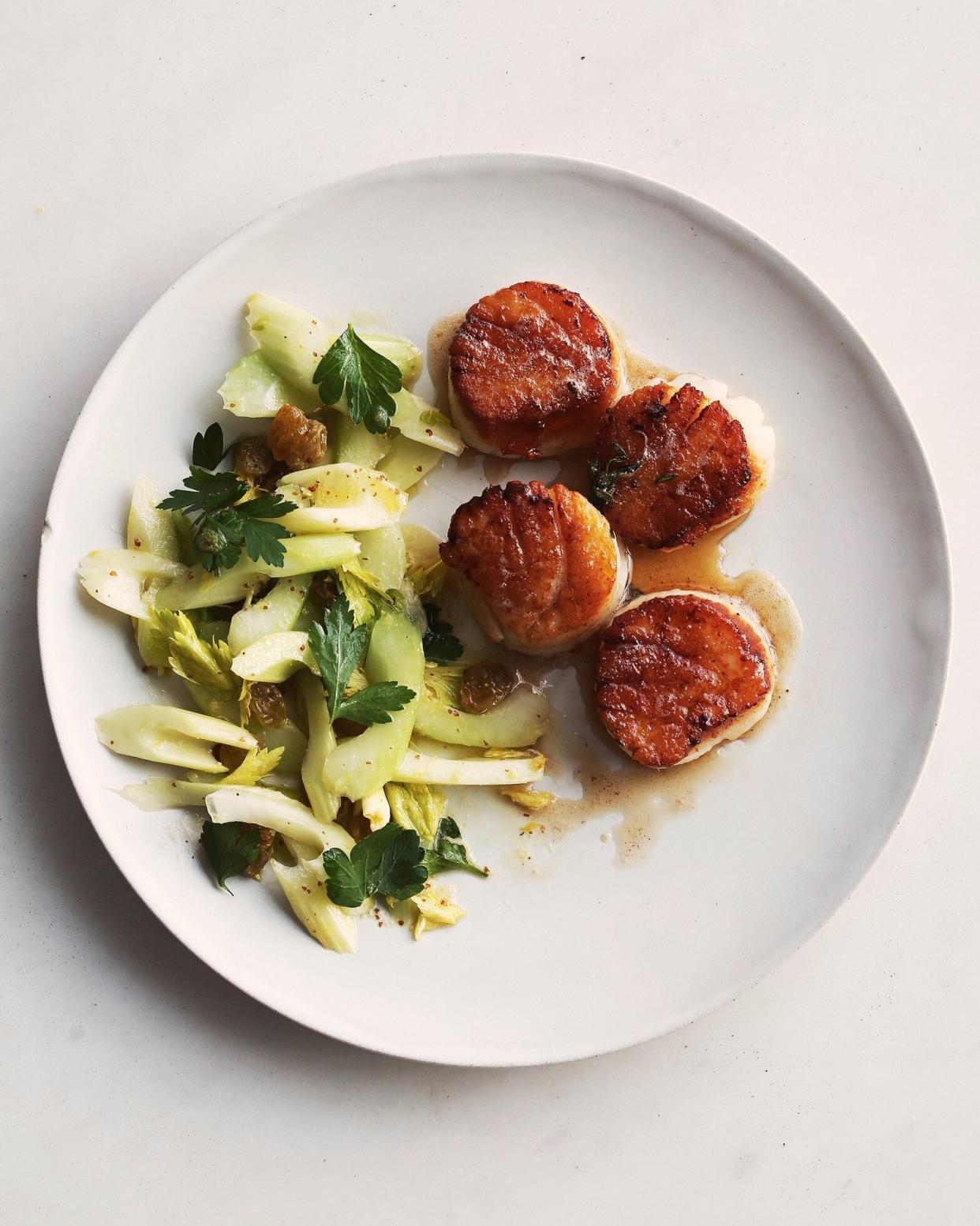Try Our Fast and Easy Method for Cooking Perfect Scallops at Home

Martyna Szczesna
Fast, delicious, and rarely seen in a home kitchen, scallops are like the unicorn of easy dinner entrées. If you love eating these marvelous mollusks at restaurants and are eager to go pro at home, read on before you dive in. The four essential tips outlined here will make all the difference when you cook scallops in your own kitchen. While the information is mostly for the classic pan-seared preparation, scallops are a versatile protein that can be skewered and grilled, broiled, baked, or even cured in a dish like ceviche. Apart from the ceviche, keeping the following guidelines in mind for whichever way you cook them is a very good idea.
Dry, Dry, and Then Dry Them Some More
To prepare scallops that end up perfectly cooked with a crisp, deep-golden-brown crust, you need to start at the store. Look for scallops labeled "dry" or "dry-packed;" this means they haven't been "wet-packed," as in treated with a chemical preservative (which in turn packs in a ton of extra unnecessary moisture).
Ready to cook? Before you turn on the burner, get out a platter or a baking sheet and line it with a double layer of paper towels (or a clean kitchen towel). Arrange the scallops on the tray, cover with another layer of towels, and gently but thoroughly press around each scallop to absorb as much moisture as possible. Wait to season them until you're ready to cook; salt draws moisture out so the scallops will get wet again if they sit for too long.
Mind the Fat
For successful scallop searing, your burner needs to be between medium-high and high heat, so use an oil with a high smoke point. Clarified butter, grapeseed oil, or just plain old vegetable oil are all great options. Avoid using fats like whole butter or extra-virgin olive oil—they'll burn and turn rancid before the scallops have a chance to finish cooking. There's a time and a place for incorporating those lovely, more delicate fats, though, such as in a pan sauce or finishing glaze.
Give Them Space
For anything you want to brown in a skillet, overcrowding the pan is a kiss of death—and this especially rings true for scallops. Choose a heavy-bottomed, stainless steel or cast-iron skillet that is big enough to give each scallop about a half-inch to an inch of space all around. If you don't have a pan large enough, simply work in batches and stash the cooked scallops in the oven on warm while you finish up.
Hands Off
Once you've added the scallops to your ripping hot pan, you may be tempted to move them around every few seconds. Resist! The scallops will need uninterrupted time with the hot oil in order to form that beautiful golden-brown crust. Once the scallops have been cooking for about a minute and a half, try flipping one over gently with tongs. If it releases easily, then they're ready to be turned over. If it sticks, give them another 15 seconds before checking again.
One More Saucy Suggestion
Once your scallops are cooked and resting on a plate, you'll be left with a bunch of flavorful little brown bits stuck at the bottom of the skillet. These bits, also known as "fond," make a wonderful foundation for a quick pan sauce.
Here's how: Add a minced shallot to the pan with the fond, and sauté it over medium heat until tender. Add a dash of white wine or dry vermouth, and scrape up the bits using a wooden spoon. Add a glug of chicken broth, a squirt of lemon, and a pat of cold butter. Whisk it all together until it looks emulsified, taste and adjust seasoning as needed, then pour it over your scallops before serving.

